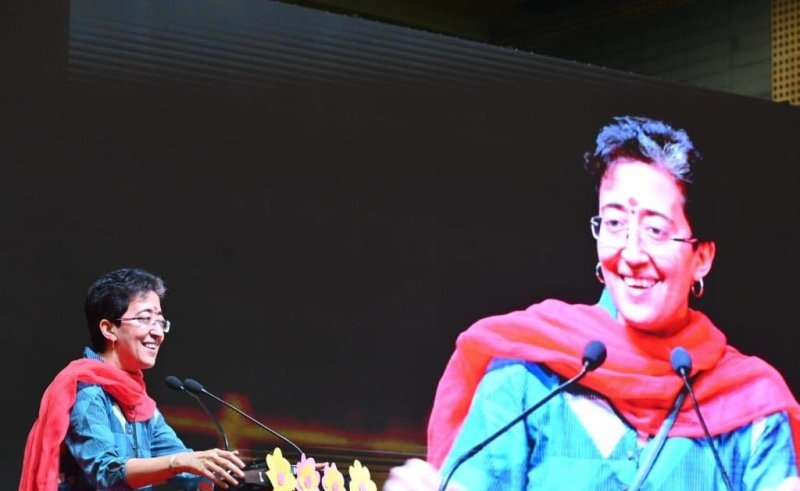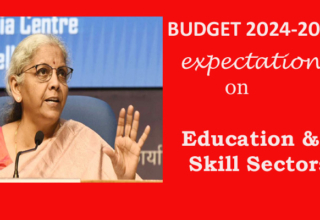
Following Manish Sisodia’s arrest and his subsequent resignation, Delhi’s ‘Education’ Model piloted by him since 2015, won’t pause or even take a bend as his successor, Atishi as the new Education Minister of Delhi, is one of its key architects and from team writes Autar Nehru
Manish Sisodia, Deputy Chief Minister and Education Minister of Delhi for the past eight years in the AAP-led Delhi government resigned on February 28 following his arrest by the Central Bureau of Investigation (CBI) in the Delhi Excise Policy (2021-22) licensing ‘scam’ on February 26. In a way, the unexpected resignation also brought the final curtain on his status as a celebrated education administrator and policy maker, who turned around Delhi’s once ramshackle government schools.
He is now succeeded by Atishi Marlena, his former advisor from July 2015 to April 2018, who is known for spearheading the team of Delhi Government’s interventions in the field of education as the backroom (girl) and thereby playing a key role in transforming the face of Delhi’s government schools. Atishi assumed the charge of Delhi’s new education minister on March 7. Significantly she is also a first female minister in AAP’s eight year-old government.
Atishi (she has dropped her surname), an alumnus of St Stephen’s College Delhi and a Rhodes scholar of Oxford University, who joined AAP in 2013 is a first time MLA and member of the Political Affairs Committee & National Executive of the Aam Aadmi Party (AAP), now a national party. As an important and articulate leader of her party, the new education minister says absence of Sisodia won’t be felt by the children of Delhi as she has stepped into his mentor’s shoes only to take his work forward. As such, on face of it, the Delhi education model stays afloat and going without any big change.
Sisodia’s exit also meant that a new finance minister, Kailash Gehlot, presented the 2023-24 budget of the state in his place on March 22. Like previously, education outlay was the highest at Rs 16,575 Crore in the Rs 78,800 Crore for the year 2023-24 with a marginal increase of over Rs 200 Crore from the previous year. The highlight of this year’s education budget is that new tablets will be provided to all teachers (including regular, guest and contractual), vice principals, principals and DDEs. Along with this, the government will provide at least 20 new computers in every school in a phased manner so that new concepts as well as learning assessments can be taught with the help of these devices. In the year 2023-24, these devices will be made available in 350 schools.
The finance minister in his speech remarked, “Education Model has now gone a long way beyond just building good government school buildings and getting good results in exams. The Delhi government has allocated the highest budget for education every year. Our schools have excellent facilities and we have also introduced the best international and national level standards of training for teachers. Today, it is a matter of pride for every Indian that whenever there is any discussion on excellence in the government schooling system around the world, the example of Delhi Government schools is always cited first.”
A key announcement was about 12 new Schools of Applied Learning. These schools apart from traditional subjects will also have a professional industrial setup to provide adequate exposure to the students to develop their skills. High quality skill subjects will also be compulsorily introduced in these schools from standard 9th. Every child will study 3 skills subjects each in standard 9th and 10th and 1 skill subject each in standard 11th and 12th. The aim of this approach is that along with traditional subjects, every child should also learn such skills which will prepare him/her for new age jobs. “We believe that in the coming times Delhi Government Schools of Applied Learning will be able to present a comprehensive model of education encompassing knowledge, skills and attitude,” added Gehlot.
Sisodia as the education minister was often criticized for large number of teacher and principal vacancies as these were surprisingly high and filled with temporary guest teachers, whose number stood at 24,003 last year. In fact, he had a recent face-off with Lieutenant Governor, V K Saxena over lapsed vice-principal vacancies as for the past five years, recuritments were stalled. Now the Union Public Service Commission (UPSC) has selected 334 candidates to fill the vacant posts of principals in Delhi government schools and of these 100 have been teachers at these schools. There is a requisition for filling up 543 vacant posts of principals – 363 through direct recruitment and 180 through promotion. Also, over 6000 regular teachers have also joined in the past one year and that has dwonturned the number of guest teachers to 16,786.
However, the government teacher union, Government School Teachers Association (GSTA), Delhi, is not impressed with the development and feel it is still a long way to go as the PTR is still very high than the norm at most of the schools and shows no attention is being paid to get more teachers. “I can tell you no more than 125 schools out of 1024 offer science stream in government schools. In other words, government schools which are now essentially schools of children belonging to poor families, don’t support aspiration of this population,” says Ajay Veer Yadav, General Secretary, GSTA, while adding that teachers in Delhi have been burdened with unnecessary works on account of non-teaching duties and things like summer camps, PTM events, etc.
The Delhi education model, which has changed the political narrative around education and created a hope for public schools in India, has infused several ideas into school education, which have been acknowledged widely. And one of those acknowledgments is coming directly from the beneficiaries as last year about 4 lakh students left private schools in Delhi for government schools on account of both the pandemic hardships and visible improvements in the government schools in the national capital. “I can tell with certainty that schools of Delhi government have becoming empowering. My two children go to school and I can clearly see their enthusiasm, interest and change. My elder son just finished his 10th board exam and pursue science stream. I had never thought, he could even complete class 8,” says Rampal, a daily wager migrant worker settled in Delhi.
Another important success of the model has been the containment of bullying, reckless behaviour of damaging classroom property, rampant smoking and quarrels within and around school campuses. The CCTV monitoring, better teacher training and co-curricular and sports push has brought things under control thought the menace is not out.
Atishi, who will with time come out of Sisodia’s shadow, will be the person to watch for as her education background, values and sharp political acumen, will add further muscle to education reforms particularly aimed at restoring trust in government schools. Also, after the administrative control of Municipal Corporation of Delhi passed into AAP’s hands following its electoral win in the December 2022 elections (securing a simple majority in the 250 house), all eyes will be on AAP government on how it will improve the nearly 1650 MCD schools decried by it over years for being laggards and in ruins.
Commenting on the journey of Delhi Education Model, Francis Joseph, a well-known education policy expert credited with helping Brihanmumbai Municipal Corporation in establishing free-of-fees schools affiliated to CBSE/ICSE/Cambridge/IB Schools besides working with Maharashtra in setting up the Maharashtra International Education Board, feels though there is a turbulence in it following Sisodia’s arrest, the story will remain intact and in public discourse. “Whether the model is actually a model for turning around government schools will be known in 10-20 years when the generation who are schooling nowadays in Delhi return to society as workers and adult citizens. But at the same time, though Delhi has small number of schools, the way the story around them has fanned out, has become the national education story of reckoning,” he adds.
So, continuity of the story is the verdict.










